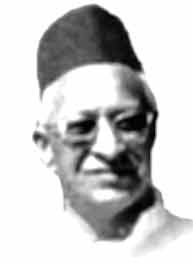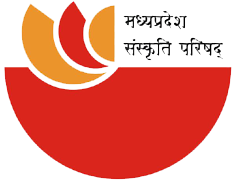Kalidasa Samaroh

Pt. Suryanarayan Vyas
Late Padma Bhusana Late Pt. Surya Narayan Vyas, who started organizing Kalidasa Jayanti In Ujjain in the thirties, constituted Kalidasa Parishad to enroll the support of distinguished scholars and national leaders. Late Dr. Kailash Nath katju, the Chief Minister of M.P. was mainly inspired by him to celebrate the Kalidasa Samhoraha on a national scale.

First President of India Shri Rajendra Prasad in Kalidas Samaroh in 1958
First kalidasa Samaroh at Ujjain was inaugurated by late of India Dr. Rajendra Prasad and the occasion turned out to be an important in the cultural history of India .A large numbers of eminent scholars in high dignitaries assembled for a week long celebration Russian , German, Iranian and Chinese delegation also participated in the function. Most of the Indian states contributed generous donations for the Samaroha and participated in through their representatives.The Natya Samaroha and an All India exhibition of paintings and sculptures conducted by the M.P. Kala Parishad attracted the participation of noted artists. Well known authorities on Kalidasa like late Dr. V. Raghavan of Madras University and Dr. Gauri Nath Shastri, the then Principal, Govt. Sanskrit College, Calcutta, themselves acted and produced the plays of Kalidasa on a specially erected stage, for not less then fifteen thousand strong an audience. Mr. Wu Shuch, who had staged Shakuntala at Peking in 1957, also participated in the Drama Festival.

President Shri. RV Raman inaugurating Kalidasa Samaroh-1990
Started on such a grand scale in 1958, Kalidasa Samaroha is being celebrated every year at Ujjain. Year after year Ujjain has attracted the best known artists in the field of dramatics and dance performance. Well known British Dr. A. L. Basham, now settled in Australia, Prof., Hideo Kimura of Buddhist University, Kyoto, Japan and Mr. Walter Leifer of West Germany have visited Ujjain to pay their tributes to Kalidasa in different years.
Every year, beginning on the Kartika Shukla Ekadashi, Kalidasa Samaroha is celebrated with effective audiences running into several thousands. Reflecting the rich and multifaceted attainments of Kalidasa, the Samaroha consists of Productions of Kalidas’s original plays in Sanskrit, versions of Sanskrit plays in Hindi and other Indian Languages, performances of traditional theatrical and dance forms, ballets, and dance recitals, and an All India Exhibition of Art and Sculpture. Weeklong seminars, scholastic discussions and encounters on various aspects of Kalidasa, Sanskrit theatre and literature highlight the celebrations.
In 1973 at the instance of M.P. Kala Parishad a panel of eminent theatre personalities and experts was appointed to advise on restructuring of the Samaroha and to suggest ways and means for making the festival broad-based and a more relevant forum of the classical tradition and the contemporary creative efforts.
The panel recommended that the Samaroha should be broad-based so as to make it truly a national forum for creative exploration of our multi-faced ancient tradition and that this exploration could be achieved only if it was organically related to the contemporary theatrical effort. The panel further recommended that in each Samaroha a play of Kalidasa or any other Sanskrit play-write should be performed in original Sanskrit, as per norms prescribed in Bharata’s Natya Shastra in order to authentically reconstruct the ancient Sanskrit style, another play of Sanskrit in any of the theatrically rich Indian languages including Hindi, a production of a Sanskrit play in the Likdharmi style in Hindi, a ballet based on either Kalidasa or some other Sanskrit classic and recital of one of the traditional theatre or dance forms which are living remnant of the ancient Sanskrit tradition such as Koddiattam, Ankiant, Chhau, Kuchipudi, Yakshagaan etc. and a contemporary Hindi play making use of the life and age of Kalidasa or the classical tradition in general should be performed in the Samaroha. A living dialogue between the scholars, Sanskrit theatre and performing arts was also considered as a necessary part of the Samaroha.
The panel also recommended that stage worthy translations of Sanskrit plays in Hindi and other languages should be prepared and published and that there should be a museum and a library consisting of books, photographs, manuscripts, films, tapes, costumes and other material relating to Sanskrit and traditional theatre. It was also recommended that a well equipped theatre hall should be built in Ujjain and that a center named after Kalidasa designed to study, explore and creatively use classical performing arts should be established. The recommendations of the panel were accepted and the theatre festival was restructured accordingly.
As result, the government of Madhya Pradesh established Kalidasa Akademi at Ujjain in order to organize the Samaroha every year in keeping view of the memory of Mahakavi Kalidasa. Accordingly, the Akademi starts to organize the Samaroha from the year 1979 in collaboration with Vikram University under the patronage of the department of culture Government of Madhya Pradesh.
Thus, the glory of the Kalidasa Samaroha flourished year after year not only in national level but also in International level.
1. Contribution of foreign scholars and artists in Kalidasa Festival :
Academic Programme –
(A) An international seminar on traditional Kalidasa criticism was organised by the Kalidasa Akademi on the occasion of Kalidasa silver jubilee festival in 1982. In this two days seminar which held on 28th and 29the November 1982 scholars from federal Republic of Germany, Belgium, England, japan, Canada and all over India took active participation. The foreign scholars were :
- Prof. Paul Thieme, FDR, Germany
- Prof. Michael Honn, FDR, Germany
- Miss Haessing, FDR, Germany
- Prof. Clifford wright, England
- Mr. and Mrs. Phan Alphan, Belgium
- Prof. V. Subramanyam, Canada
- Mr. and Mrs. Miyomoto, Japan
(B) All India seminar on “Problems of Production of Sanskrit Plays” in which Prof. Fritz Benevitz from GDR theatre men and Sanskrit scholars from all over India participated on 3, 4 and 5th December 1982.
(C) Number of lectures delivered by the foreign scholars in Kalidasa Akademi time to time.
- Relevance of Natyashastra – Prof. M.C. Byrski (Poland) on 9th November, 1981.
- New light on Ashokan Pillars – Sir John Irwin, Former Curator, Victoria and Albert Museum on 27th February 1982 (Courtesy- British consulate, Bombay).
- South American poetry and literary …bilities, Dr. Premalata Verma, Prof. Arjentina University, Arjentina on 12th April, 1985.
Cultural Programmes –
(A) Abhijanashakuntalam of Kalidasa was staged by the Volos theatre group from athens in Greek language and Greek style on 12 November 1986 in the occasion of Kalidasa festival.
(B) Avimaraka of Bhasa was performed by Waseda drama con, Tokyo (Japan) in Japanese language and in their style on 20 November 1988 in Kalidasa Festival.
Honarary Felloship to Scholars Abroad
The Kaldiasa Akademi has instituted Honorary Fellowship (RATNASADASYTA) to be awarded to Sanskrit scholars and classical and traditional performing artists of the Sanskrit theatre respective field. The Akademi has awarded the Honorary Fellowship (RATNASADASYATA) to the following western scholars of eminence.
- Late Prof. A. Sharpe – Sanskrit Scholar, Belgium
- Professor F.B.J. Kuiper, Germany -Well knowned scholar of bharata Natyashastra
- Professor Otoya Tanaka, Tokyo, Japan – Translator of the works of Kalidasa in – Japanis language.

